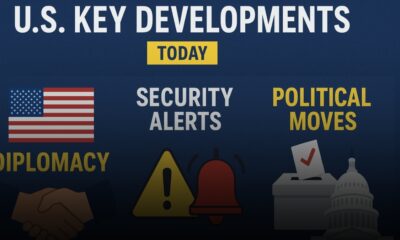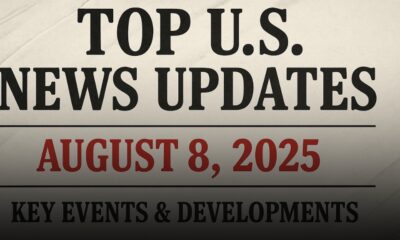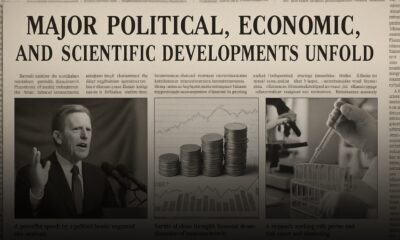Politics
How Social Platforms Are Reshaping Global Politics and Activism!

In the digital era, social media platforms have emerged as powerful tools that are redefining the landscape of global politics and activism. From grassroots movements to presidential campaigns, from diplomatic exchanges to humanitarian crises, platforms like Facebook, Twitter (X), Instagram, TikTok, and YouTube act as global stages where political narratives are built and activism is amplified. The digital public sphere enables citizens, leaders, and activists to engage in direct communication, challenge traditional power structures, and mobilize international support within seconds.
Social Media as a Political Communication Tool
Gone are the days when political communication relied solely on television, newspapers, or radio. Today, leaders use platforms like Twitter and Instagram to directly address citizens, bypassing mainstream media filters. This has created a shift toward personalized political messaging, where leaders share policies, opinions, and even personal updates to connect emotionally with their audience. This direct interaction has not only reshaped election campaigns but also increased accountability, as citizens can instantly respond, criticize, or support political messages.
Grassroots Mobilization and Digital Activism
Social platforms have given unprecedented power to grassroots activists. Local protests can now gain global recognition through viral hashtags, livestreams, and community sharing. For example, movements such as the Arab Spring, #BlackLivesMatter, and #MeToo demonstrated how digital activism can ignite global conversations, mobilize mass participation, and even force governments to change policies. What once required years of organizing can now happen in days, thanks to the speed and reach of digital communication.
Case Studies of Global Digital Movements
The Arab Spring
Between 2010 and 2012, citizens across the Middle East used social media to organize protests and spread real-time updates, challenging authoritarian regimes. Platforms like Facebook and Twitter played a critical role in connecting citizens, exposing state violence, and gaining international support.
Black Lives Matter
The Black Lives Matter movement began as a hashtag in 2013 and evolved into a global campaign against racial injustice. Social media amplified stories of police brutality, mobilized protests worldwide, and pressured governments and corporations to adopt reforms.
Climate Activism (#FridaysForFuture)
Climate activist Greta Thunberg used Twitter and Instagram to inspire millions of young people to protest for climate action. The hashtag #FridaysForFuture became a global rallying cry, showing how youth-driven activism thrives on social platforms.
Social Platforms and Policy Influence
Digital campaigns often push governments and corporations to act faster than traditional lobbying. Viral petitions, public pressure campaigns, and massive online discussions create accountability that political systems cannot ignore. Whether it is gender equality policies, environmental reforms, or anti-corruption measures, social media activism has proven to be a catalyst for change.
Digital Diplomacy and Global Relations
Governments and diplomats now use platforms for digital diplomacy. Embassies, ministries, and leaders engage directly with foreign citizens, shaping narratives and countering misinformation. Twitter diplomacy, in particular, has become a defining feature of international relations, with world leaders using the platform to announce policies, express solidarity, or criticize rivals.
Challenges: Misinformation and Political Polarization
While social platforms empower voices, they also bring serious challenges. Disinformation campaigns, fake news, and algorithm-driven polarization can destabilize democracies. Political manipulation through bots, troll farms, and deepfakes threatens the integrity of elections and governance. Moreover, authoritarian regimes often use these same platforms for surveillance and censorship, turning tools of freedom into instruments of control.
Youth and Political Engagement
Young people are at the heart of digital activism. Platforms like TikTok, Instagram, and YouTube give them avenues to share opinions, organize events, and influence politics without formal political structures. Unlike traditional political participation, digital activism enables youth to contribute creatively—through memes, short videos, and campaigns—that resonate with millions globally.
The Future of Politics and Activism in the Digital Age
The coming years will further integrate technology into politics and activism. Artificial intelligence will enhance campaign strategies, blockchain will create decentralized and censorship-resistant platforms, and the metaverse may host virtual rallies and global conferences. As technology evolves, so too will the role of social platforms in shaping democracy, diplomacy, and civic life.
Table: The Role of Social Platforms in Global Politics and Activism
| Area of Impact | Positive Contribution | Key Challenges |
|---|---|---|
| Political Communication | Direct interaction between leaders and citizens, faster policy communication. | Risk of populism, oversimplification of complex issues. |
| Grassroots Movements | Mobilization of protests and campaigns, global amplification of local causes. | Online-only activism, lack of sustained offline impact. |
| Policy Influence | Viral campaigns push governments and corporations toward reforms. | Risk of reactionary policymaking driven by online trends. |
| Digital Diplomacy | Enhances global dialogue, builds soft power, counters misinformation. | Diplomatic conflicts escalated through careless online statements. |
| Crisis Activism | Real-time updates during conflicts and disasters, mobilization of aid. | Spread of fake news, propaganda wars during crises. |
| Youth Engagement | Encourages political participation, civic creativity, and issue-based activism. | Vulnerability to misinformation, lack of political literacy. |
| Future Trends | AI, blockchain, and metaverse will transform how politics and activism operate. | Risk of surveillance, privacy breaches, and digital authoritarianism. |
The Power of Hashtags in Political Activism
Hashtags have become symbolic weapons in modern activism. They not only unify voices but also make issues visible to the global audience. For example:
- #ArabSpring signaled revolutions across the Middle East.
- #BlackLivesMatter turned a national issue into a worldwide demand for justice.
- #MeToo gave millions of women courage to share personal stories.
- #FridaysForFuture connected young activists across borders to demand climate action.
Country-Specific Examples of Social Platforms in Politics
- United States: Twitter diplomacy during Trump’s presidency changed how world leaders communicate. Campaigns also rely on microtargeted Facebook ads.
- India: Farmers’ Protest (2020–21) gained global traction as hashtags like #FarmersProtest trended worldwide, forcing international celebrities like Rihanna to speak up.
- Pakistan: Political parties rely heavily on Twitter trends, YouTube streams, and TikTok campaigns to mobilize supporters and influence elections.
- China: Platforms are heavily regulated, but Weibo and WeChat act as both social and political tools, controlled by the state for propaganda and information management.
- Ukraine: President Zelenskyy uses social platforms to communicate directly with global audiences, bypassing traditional diplomacy and strengthening international solidarity.
Social Platforms and Election Campaigns
Modern election campaigns are now unthinkable without social platforms. Political parties spend millions on digital ads, influencer partnerships, and targeted campaigns. The ability to microtarget voters based on demographics and interests has revolutionized campaign strategies, but it has also raised ethical concerns about data misuse, as seen in the Cambridge Analytica scandal during the 2016 US elections.
The Role of Social Media in Crisis Response
During crises, social platforms become lifelines:
- Natural Disasters: Platforms provide real-time updates, fundraising, and volunteer coordination.
- Wars and Conflicts: Governments use them to rally international support and counter enemy propaganda (e.g., Ukraine war).
- Humanitarian Causes: Platforms amplify NGO appeals, generating rapid donations and awareness globally.
Benefits of Social Platforms in Politics and Activism
- Amplification of Voices – Marginalized groups gain global visibility.
- Faster Mobilization – Organizing protests, petitions, and campaigns is easier than ever.
- Transparency – Citizens hold leaders accountable through viral campaigns.
- Global Solidarity – Local struggles gain international recognition and support.
- Alternative Narratives – Counters state-controlled media and propaganda.
Challenges and Risks
- Misinformation & Fake News – Spread of false content undermines democracy.
- Political Polarization – Echo chambers reinforce divisions.
- Cyber Manipulation – Bots and trolls distort narratives.
- Censorship & Surveillance – Authoritarian regimes weaponize platforms.
- Digital Divide – Access is unequal; rural and poor populations may be left out.
The Future of Digital Activism and Politics
As technology evolves, social platforms will undergo deeper integration with advanced tools:
- Artificial Intelligence (AI): Used for analyzing voter behavior, but also risks manipulation.
- Blockchain: Ensures transparency, combats fake accounts, and prevents censorship.
- Metaverse Politics: Virtual rallies, campaigns, and protests may emerge.
- Global Regulations: Governments are moving toward stricter regulations to balance freedom of speech and accountability.
The Shift from Traditional Politics to Digital Politics
In earlier decades, political discourse was confined to rallies, television, newspapers, and official debates. Today, social platforms have democratized political engagement, allowing individuals—even without institutional power—to voice opinions, criticize leaders, and demand accountability. The hashtag has become a modern political weapon, creating waves of awareness faster than any traditional channel could.
Amplification of Activism Movements
Movements like #BlackLivesMatter, #MeToo, and climate justice campaigns gained momentum primarily through social platforms. These digital campaigns not only spread awareness globally but also pressured governments, corporations, and institutions to respond. What once required years of lobbying and physical protests can now start with a viral post reaching millions in hours.
Real-Time Political Mobilization
Social media enables instant coordination for protests, awareness campaigns, and petitions. During events like the Arab Spring, digital platforms played a central role in mobilizing citizens against oppressive regimes. Real-time updates, location tagging, and live streams transformed activism into a borderless, globalized effort.
Political Campaigns and Digital Influence
Political parties worldwide now rely heavily on social platforms for election campaigns. Digital ads, influencer endorsements, and viral content are as impactful as traditional TV ads. Politicians use platforms to bypass mainstream media and directly address citizens, building stronger engagement and personalized connections.
The Double-Edged Sword of Misinformation
While platforms enable activism, they also create challenges with fake news, propaganda, and political manipulation. Algorithm-driven echo chambers polarize societies, spreading misinformation that influences elections and public opinion. Global political institutions now view misinformation as one of the biggest threats to democracy.
Youth-Led Digital Activism
Young generations dominate digital spaces and are more politically active online than offline. They are redefining activism through creative campaigns on TikTok, Instagram reels, and YouTube storytelling. Their efforts often challenge established authorities, creating new avenues for political accountability.
Government Regulations and Platform Accountability
Governments worldwide are increasing scrutiny of social platforms. From content moderation policies to regulations on political ads, there is a growing debate on balancing freedom of speech with national security and truth. Platforms like Facebook and X are frequently criticized for either allowing too much misinformation or censoring political voices.
Globalization of Political Voices
Social platforms give marginalized communities and underrepresented voices a global stage. Issues like human rights, gender equality, and climate justice reach beyond national borders. A protest in one country often sparks solidarity demonstrations in others, highlighting the interconnectedness of political struggles in the digital age.
Case Studies of Digital Political Movements
One of the strongest proofs of social platforms’ influence is real-world case studies. During the Arab Spring (2010–2012), Twitter and Facebook were used to mobilize millions against authoritarian regimes in the Middle East. Similarly, in Hong Kong protests (2019), encrypted apps and online campaigns helped protesters coordinate despite government surveillance. These cases show that digital activism can challenge powerful states and force international attention.
Role of Influencers in Political Narratives
In the modern era, not only political leaders but also social media influencers shape political discussions. With millions of followers, influencers endorse campaigns, raise awareness, and often become new-age political voices. This blending of celebrity culture with politics makes activism more relatable but also raises concerns about credibility.
Social Platforms as Alternative Media
Traditional media outlets are often controlled by corporate or state interests, limiting what is shown to the public. Social platforms act as alternative media, offering citizen journalism through live streaming, independent reporting, and viral videos. From exposing police brutality to sharing stories of marginalized groups, digital platforms bypass censorship and give raw, unfiltered perspectives.
Cross-Border Solidarity Movements
Social platforms have created a unique transnational activism culture. For example, climate movements like Fridays for Future started by Greta Thunberg spread globally through Instagram and Twitter. Similarly, protests in Palestine or Iran often spark international hashtags and solidarity marches across different continents, highlighting how borders no longer limit political struggles.
Data Analytics and Political Micro-Targeting
Behind the scenes, platforms are used for data-driven political campaigns. Parties and governments analyze user behavior, demographics, and browsing patterns to design personalized messages. This was evident in the Cambridge Analytica scandal, where voter data was used to manipulate election results. Such practices reveal both the power and risks of social platforms in politics.
Rise of Digital Censorship and Shadow Banning
As platforms gain political power, governments and corporations pressure them to censor content. Some voices claim platforms use shadow banning—reducing visibility of certain political posts without officially deleting them. This raises new debates on digital freedom of speech and whether platforms themselves are becoming political actors.
Future of Digital Activism: AI and Metaverse
The next decade of activism may extend into AI-driven campaigns and metaverse spaces. Virtual rallies, AI-powered fact-checking bots, and immersive protest simulations could become new tools of digital activism. As technology evolves, so will the way citizens engage in political discourse online.
Politics
U.S. News Update | Hurricane Erin, Brooklyn Shooting, and US Open – August 19, 2025
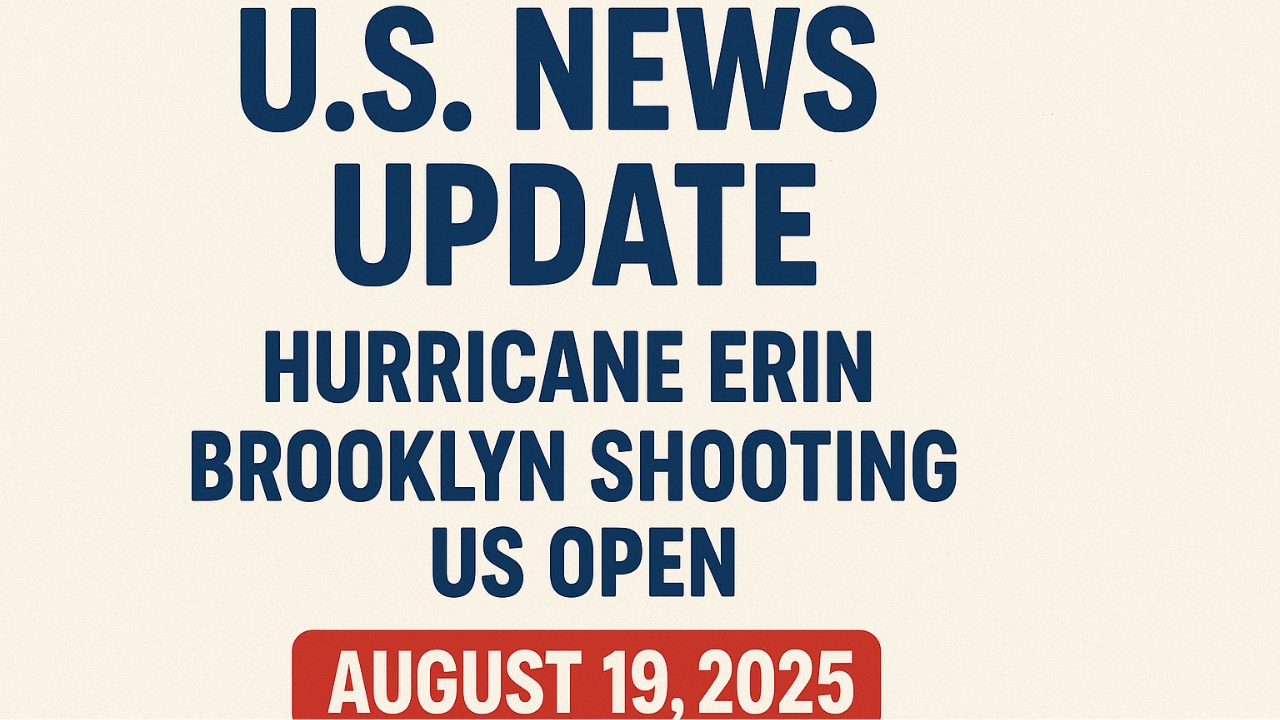
Hurricane Erin has become one of the fastest-intensifying storms in Atlantic history, now reaching Category 3 status. Experts warn of dangerous surf, rip currents, and flooding risks along the U.S. East Coast.
- Emergency Services: Coastal regions are on high alert, preparing evacuation routes and shelters.
- Forecast Concerns: Meteorologists predict the storm could grow further, posing risks to North Carolina, South Carolina, and Virginia.
- Climate Insight: Scientists link such rapid intensification to warmer ocean waters, raising concerns about climate change’s impact on storm behavior.
Mandatory Evacuations in Hatteras Island, NC
Dare County, North Carolina, has issued mandatory evacuations for Hatteras Island due to flooding concerns.
- Coastal Flood Watch: In effect until August 21.
- Road Safety: Highway 12 is expected to be underwater, limiting access in and out of the island.
- Community Response: Local authorities stress the importance of following evacuation orders to avoid life-threatening conditions.
Brooklyn Nightclub Shooting Leaves Three Dead
In New York, a mass shooting at the Taste of the City Lounge in Crown Heights left three people dead and nine injured.
- Incident Details: The shooting erupted after a dispute inside the crowded nightclub.
- Police Findings: Authorities recovered 42 shell casings from the scene.
- National Concern: This tragedy highlights ongoing struggles with urban gun violence, raising calls for stronger enforcement and community safety programs.
US Open Mixed Doubles Introduces Bold New Format
The 2025 US Open is shaking things up with a revamped Mixed Doubles format and a record-breaking $1 million prize.
- New Format: 16 teams will compete over two days using fast-paced scoring rules.
- Star Match-Ups: Emma Raducanu & Carlos Alcaraz will face Jack Draper & Jessica Pegula in a high-profile first-round clash.
- Fan Excitement: The format aims to attract younger audiences and bring more drama to the tournament.
Native American Caucus Resumes in California
The California Legislative Native American Caucus resumed its session with a ceremonial opening in the Assembly Chambers.
- Advocacy Goals: Leaders plan to advance policies on tribal sovereignty, cultural heritage, and education.
- Representation Impact: The caucus highlights the growing role of Native voices in U.S. political landscapes.
Summary Table – U.S. News Today (August 19, 2025)
| Topic | Details |
|---|---|
| Hurricane Erin | Category 3 storm, rapid intensification, coastal flooding risks |
| Hatteras Island Evacuations | Mandatory evacuation, highway closures, state of emergency |
| Brooklyn Shooting | 3 killed, 9 injured, 42 shell casings found, investigation ongoing |
| US Open Mixed Doubles | New format, $1M prize, high-profile tennis stars compete |
| Native American Caucus | Session resumes, focus on sovereignty, culture, and education |
FAQs
Q1: How dangerous is Hurricane Erin for the U.S.?
Hurricane Erin is highly dangerous due to its rapid intensification. It brings risks of flooding, storm surge, and power outages along the East Coast.
Q2: Why were evacuations ordered in North Carolina?
Mandatory evacuations on Hatteras Island were issued because rising seas are expected to flood roads, making them impassable.
Q3: What is known about the Brooklyn nightclub shooting?
Police confirmed three fatalities and nine injuries, but no suspects have been arrested yet. Investigations are ongoing.
Q4: What is new about the US Open mixed doubles in 2025?
The format has been changed to a faster-paced, high-stakes competition with a record $1 million prize pool.
Q5: What is the focus of the Native American Caucus in California?
The caucus is pushing for stronger recognition of tribal sovereignty, education access, and cultural heritage preservation.
Q6: How do these events reflect broader U.S. issues?
Together, they highlight themes of climate change, urban safety, sports innovation, and cultural representation in American society.
Conclusion
The August 19, 2025, U.S. news cycle captures a nation facing multiple challenges—from the natural threat of Hurricane Erin, to urban gun violence in Brooklyn, to cultural and political advocacy in California. Meanwhile, sports and entertainment bring a different kind of drama with the US Open’s bold new format.
These stories reflect the complexity of modern America: a country balancing public safety, climate resilience, cultural progress, and global attention.
Politics
U.S. Latest News Update | August 18, 2025
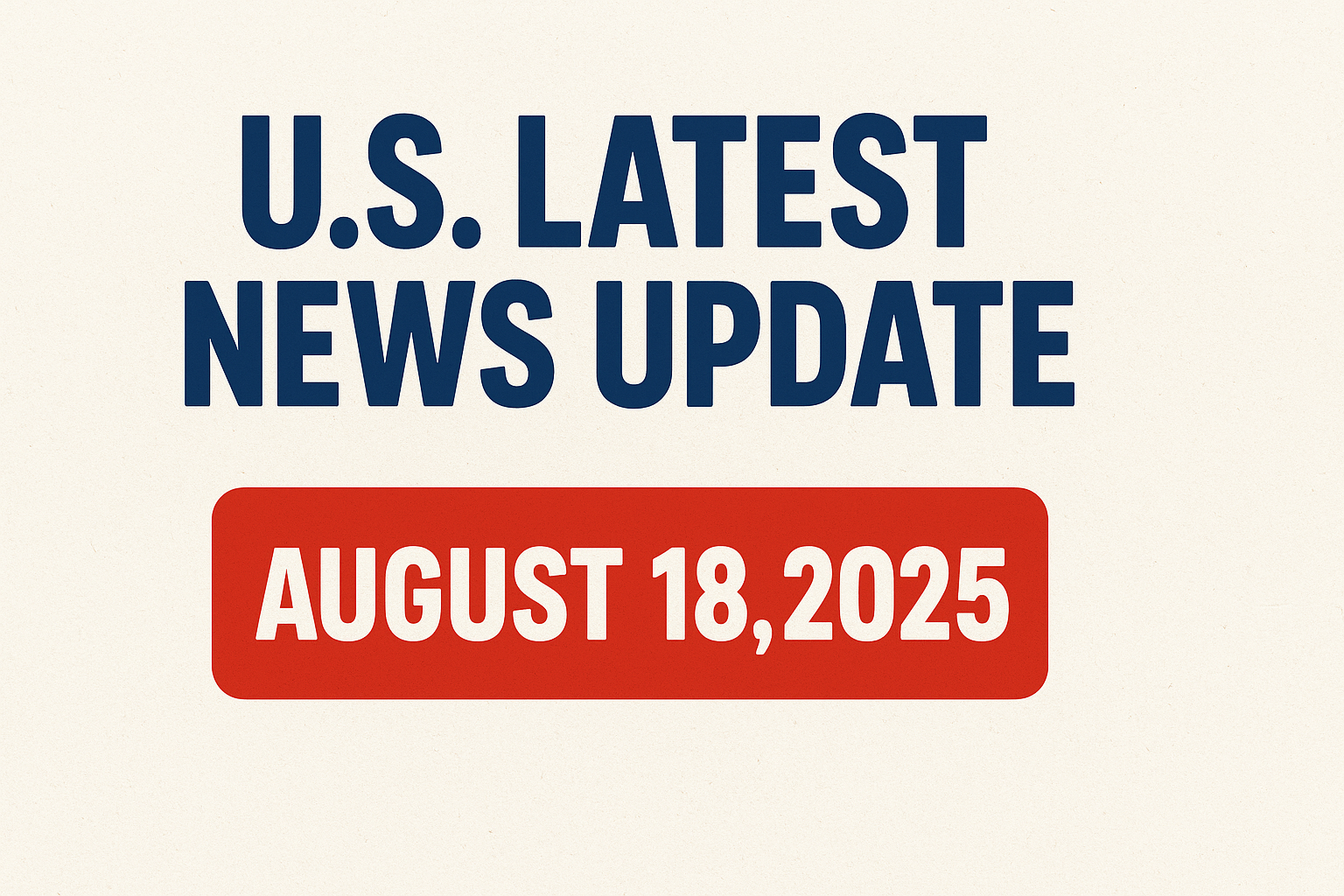
August 18, 2025, was a pivotal day in U.S. affairs, shaped by escalating federal action in Washington, a high-stakes diplomatic meeting between President Donald Trump and Ukrainian President Volodymyr Zelenskyy, and growing concerns about Hurricane Erin threatening the eastern coastline. Meanwhile, financial markets responded cautiously to these developments, highlighting the interconnectedness of politics, diplomacy, and economic stability.
This article breaks down the day’s most important U.S.-related events with in-depth coverage and analysis.
1. Federal Crackdown Expands in Washington, D.C.
The Trump administration intensified its presence in the capital, with National Guard troops from West Virginia, South Carolina, and Ohio deployed to Washington, D.C.
Key Highlights:
- Officials cited public safety and law enforcement support as the main reasons for the expansion.
- Critics argue that a militarized response risks worsening tensions rather than resolving them.
- Several Democratic-led states are preparing legal defenses to resist what they view as an overreach of federal authority.
This move signals a deepening standoff between the federal government and local authorities over law, order, and governance.
2. Law Enforcement and Market Reactions
The security situation in Washington escalated further when a Maryland man was arrested for allegedly striking a police officer with an ATV. The incident added to already heightened concerns over violence in the capital.
Meanwhile, financial markets closely tracked the unfolding political and diplomatic events:
- Oil and gold prices rose amid uncertainty.
- Stock markets displayed cautious optimism ahead of the Jackson Hole economic symposium.
- Analysts suggested that investors are waiting for clear policy direction from both political leaders and financial authorities.
3. Zelenskyy Meets Trump at the White House
Ukrainian President Volodymyr Zelenskyy arrived in Washington for talks with President Trump, joined by several European leaders. The primary focus was Ukraine’s ongoing war with Russia, which continues with no formal ceasefire in place.
Discussion Points:
- Ukraine pressed for NATO-style security guarantees.
- European allies emphasized that Ukraine’s sovereignty must be preserved.
- Trump’s previous meeting with Vladimir Putin in Alaska provided little resolution, raising questions about whether this new summit could deliver concrete results.
The meeting highlights the delicate balance between seeking peace and ensuring that Ukraine does not make territorial concessions that compromise its independence.
4. Hurricane Erin Strengthens, Threatening U.S. Coasts
Hurricane Erin grew stronger and larger, raising concerns for coastal communities along the eastern United States.
Emergency Updates:
- Forecasters warned of dangerous surf, strong rip currents, and flooding risks.
- Coastal authorities increased public alerts and emergency preparedness measures.
- Erin’s unpredictable path left meteorologists urging caution for millions of residents.
This natural threat shifted national attention, reminding citizens of the importance of disaster readiness alongside political and diplomatic concerns.
Summary Table – U.S. Highlights for August 18, 2025
| Event | Key Details |
|---|---|
| Federal Crackdown in D.C. | Expanded National Guard deployment sparks legal and political disputes |
| Law Enforcement & Markets | Arrest in D.C.; oil and gold rise; cautious stock market reactions |
| Trump–Zelenskyy Summit | Ukraine seeks NATO-style guarantees; European allies stress sovereignty |
| Hurricane Erin | Strengthens; dangerous surf and flooding risks for U.S. coastal regions |
Frequently Asked Questions (FAQs)
1. Why were additional National Guard troops sent to Washington, D.C.?
They were deployed to enhance security and public safety, though critics argue it reflects federal overreach.
2. What impact did these political events have on the U.S. economy?
Markets responded cautiously, with oil and gold prices rising and investors awaiting clarity from economic policymakers.
3. What was the main outcome of the Trump–Zelenskyy meeting?
The talks focused on Ukraine’s security guarantees, though no formal agreements were immediately announced.
4. How serious is Hurricane Erin’s threat to the U.S.?
It poses significant risks to coastal regions, including dangerous surf, rip currents, and flooding, though the exact path remains uncertain.
5. How are European allies involved in the Ukraine discussions?
They joined Zelenskyy in Washington to reinforce the need for Ukraine’s sovereignty and long-term security assurances.
6. What’s next for U.S. domestic politics after the D.C. crackdown?
Legal battles are expected between the federal government and Democratic-led states challenging the expanded deployment.
Conclusion
August 18, 2025, reflected the complexity of America’s challenges at home and abroad. From security tensions in Washington to critical diplomacy with Ukraine and looming environmental threats, the U.S. faces a multi-layered test of leadership. The outcomes of these events will influence not only domestic politics but also global stability in the months ahead.
Entertainment
Major Political | Economic | and Scientific Developments Unfold !

1. Introduction to US News August 5 2025
The day’s headlines in US news August 5 2025 reveal a fascinating mix of political drama, scientific milestones, and economic trends. From NASA’s careful monitoring of a sizable near-Earth asteroid to intense legislative clashes in Texas and shifts in investor sentiment, August 5 is a day that captures the complex interplay of governance, science, and finance in America.
The combination of breaking news from outlets like BBC and CNN paints a picture of a nation grappling with both urgent challenges and long-term strategic priorities. The stories carry implications not just for the US, but for global markets, scientific communities, and international political observers.
2. NASA’s Asteroid 2025 OT7 Flyby and Planetary Defense
2.1 What Is Asteroid 2025 OT7?
On August 5, NASA closely monitored asteroid 2025 OT7, a space rock roughly 170 feet in diameter. While it posed no immediate threat, its flyby at a relatively close cosmic distance underscored the importance of continued investment in planetary defense systems.
2.2 Why It Matters
Asteroids of this size are large enough to cause significant local or regional damage if they were to enter Earth’s atmosphere. Even though 2025 OT7 passed safely, the event served as a timely reminder that preparedness and early detection are essential for planetary safety.
2.3 NASA’s Monitoring Capabilities
NASA’s tracking systems, combined with international observatories, allowed scientists to precisely calculate the asteroid’s speed, distance, and trajectory. This data feeds into larger NEO (Near-Earth Object) tracking programs, enabling better response strategies in the future.
3. Texas Political Showdown Over Redistricting
3.1 Background to the Crisis
In Texas, a redistricting proposal has become the focal point of a heated political battle. Governor Greg Abbott issued civil arrest warrants for Democratic lawmakers who fled the state in an attempt to block the vote.
3.2 Constitutional and Democratic Implications
This confrontation raises serious questions about the limits of legislative authority, the role of state governors, and the protections afforded to minority party lawmakers. Legal scholars are calling this one of the most significant state-level democratic tests in recent years.
3.3 National Reactions
Across the political spectrum, the Texas standoff has triggered debates on voting rights, gerrymandering, and political obstruction tactics. CNN political analysts noted that the situation in Texas could set important precedents for similar disputes in other states.
4. US Stock Market Performance and Federal Reserve Speculation
4.1 Market Movements
On August 5, US stock indices experienced notable fluctuations. The S&P 500 dropped 0.5%, the Dow Jones dipped 0.1%, and the Nasdaq slid 0.7%.
4.2 Factors Behind the Decline
Two primary concerns weighed on markets:
- Weaker-than-expected services sector data
- Ongoing uncertainty over US tariff and trade policy
4.3 Federal Reserve’s Role
Despite the downturn, optimism lingered due to speculation that the Federal Reserve might lower interest rates in the near term. This potential shift could offer support to both corporate earnings and consumer spending.
5. Earth Records One of the Shortest Days
5.1 What Happened?
August 5 marked the third shortest day of the summer, with Earth completing its rotation 1.25 to 1.51 milliseconds faster than average.
5.2 Scientific Concerns
While these time shifts are imperceptible to humans, scientists caution that long-term acceleration in Earth’s rotation could disrupt satellite-based navigation, affect climate systems, and alter oceanic patterns.
5.3 Global Monitoring Efforts
International space agencies are collaborating to track and study these variations, hoping to better understand their root causes and potential impacts.



